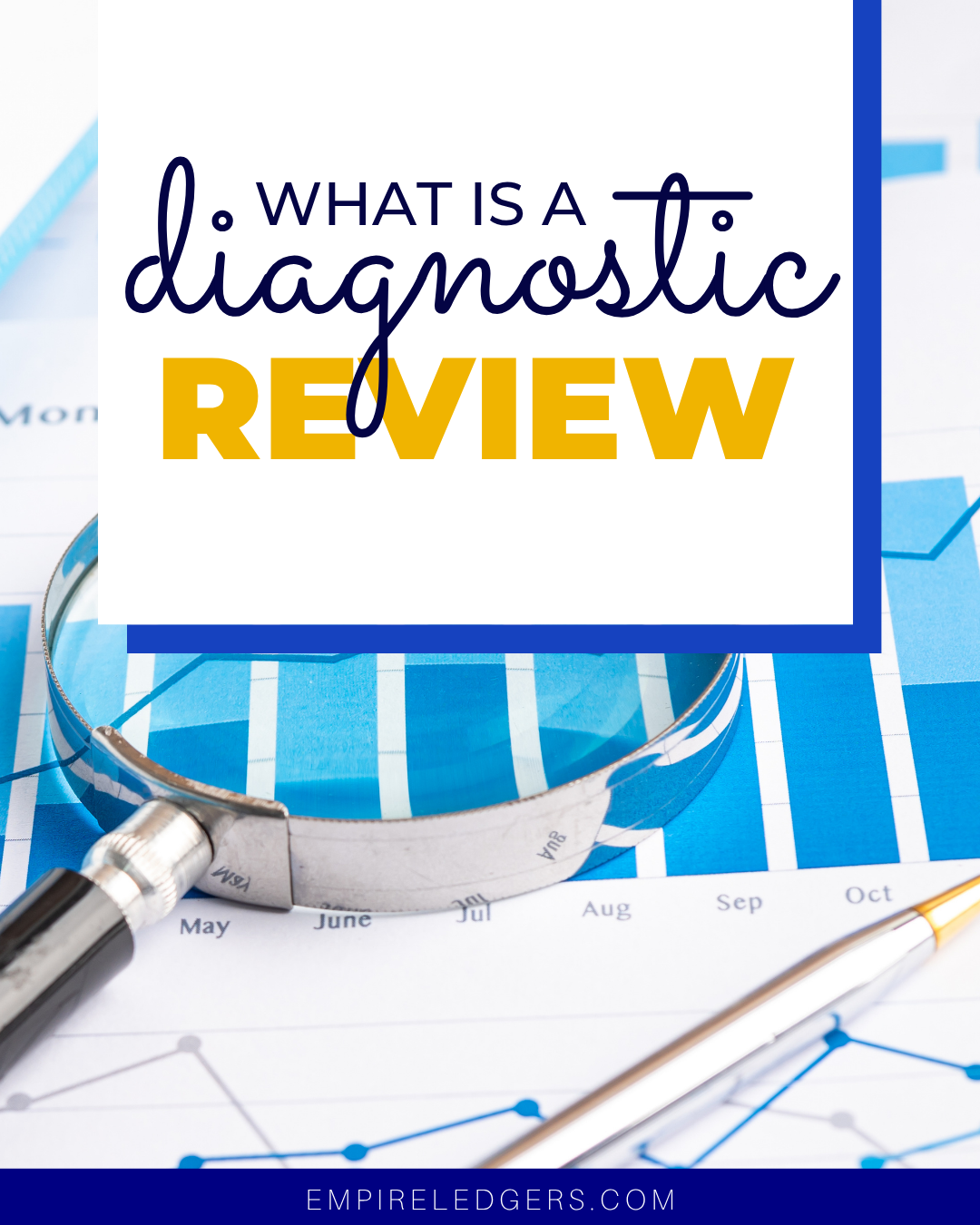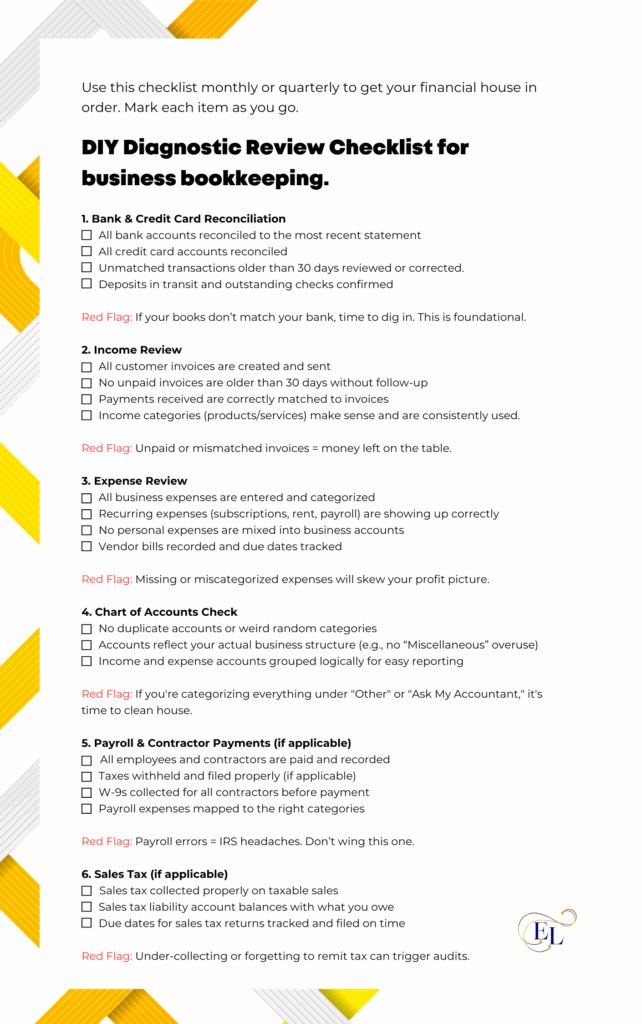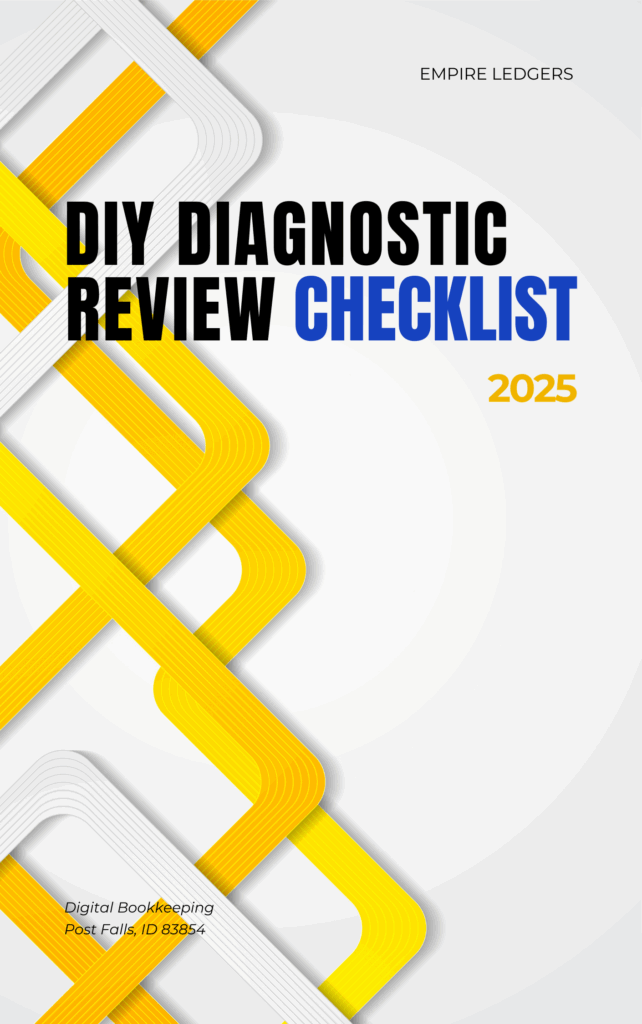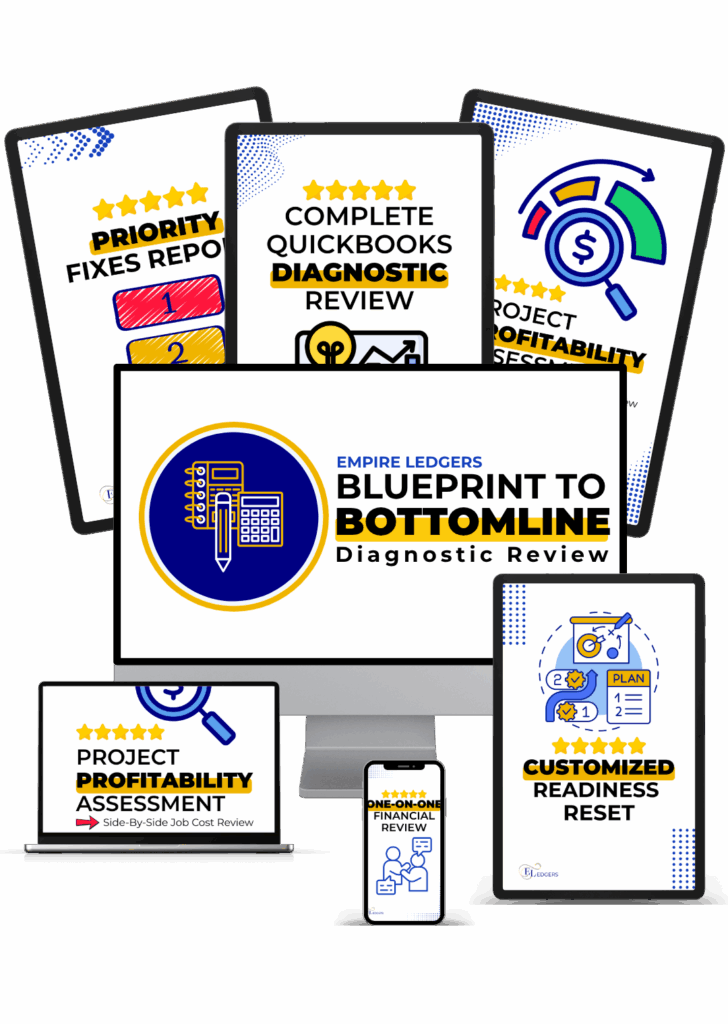What Is a Diagnostic Review of Your Financials—& Why Every Business Should Care

Let’s be real: you wouldn’t ignore a leak in a plumbing system or leave a cracked HVAC unit running full speed, right? The same logic applies to your business finances. If you don’t stop and check what’s going on around the site, small issues can turn into full-blown financial blowouts.
That’s where a Diagnostic Review comes in. Think of it like an inspection—but for your books.
Whether you’re running a plumbing outfit, an electrical crew, or a custom home building team, this review gives you the facts—no guesswork
What Exactly Is a Diagnostic Review?
Our signature Blueprint to Bottomline Diagnostic Review is a deep-dive analysis of your financial records to assess the accuracy, clarity, and health of your bookkeeping system. It’s not just about spotting mistakes—though we do that too. It’s about answering questions like:
- Are your job costs and overhead properly categorized?
- Are you charging enough to cover your real expenses?
- Is your Chart of Accounts set up to support your kind of work?
- Can your numbers actually help you make business decisions—or are they just noise?
It’s the financial equivalent of popping the hood and doing a multi-point inspection on your truck before a big job. It’s a done-for-you QuickBooks Diagnostic Review built for Contractors who want to keep more cash, save time, and finally know where they stand—without doing more work.


Download My FREE guide
Business Bookkeeping Quick Guide + DYI Diagnostic Review Checklist
Why This Matters for Trade Service Businesses
In the trades, cash flow is king. You’ve got materials to order, payroll to meet, equipment to maintain, trucks to fill, and subs to pay. That money moves fast. And if your books are a mess, you might as well be blindfolded behind the wheel of your business.
Here’s the truth: dirty books don’t just make your CPA grumpy—they cost you real money.
Let me break it down:
- Profit leaks – You’re probably bleeding money and don’t even know it. When expenses are miscategorized (or worse, lumped under “Miscellaneous”), you can’t see where the waste is.
- Overpaying taxes – If your deductions aren’t tracked properly or your expenses aren’t coded right, you’re leaving money on the table every single year. The IRS isn’t going to correct it for you—they’ll gladly take the overpayment.
- Job costing confusion – If your numbers don’t tell you what each job actually costs you in labor, materials, overhead, and time, you’re guessing on pricing. That’s how good tradespeople end up broke—not because they can’t work, but because they don’t have the right numbers.
- Stress and wasted time – When tax season hits or you need financing, you don’t want to scramble through a shoebox full of receipts or try to explain why your books don’t match your bank account. That’s not a position of strength.
A proper diagnostic review clears the fog. It gives you the clarity you need to make smart decisions—whether that’s raising prices, cutting dead weight, or finally paying yourself like the owner you are.
This isn’t about bookkeeping for bookkeeping’s sake. This is about knowing your numbers so you can run your business, not have it run you.
What Bad Books Are Really Costing You
Let’s not sugarcoat it: bad books are expensive. Not just in dollars—but in time, confidence, and momentum.
You might think, “Eh, my books are good enough.” But “good enough” can quietly be killing your bottom line.
Here’s what sloppy or outdated books are actually costing you:
- Lost profit – Expenses shoved into the wrong categories (or worse, labeled “Other” or “Ask My Accountant”) make it impossible to track where your money’s really going. You could be overpaying for supplies, getting double-billed, or missing pricing red flags—and never even see it coming.
- Missed deductions – If your books aren’t set up right, you’re likely leaving thousands on the table come tax time. Uncle Sam isn’t going to stop you from overpaying—but I will.
- Job costing chaos – You can’t price your work right if you don’t know what each job costs you. Materials, labor, fuel, permits, subs—if that’s not being tracked cleanly, you’re basically guessing your way through bids.
- Zero clarity – When it’s time to make decisions—hiring someone, buying a new rig, bidding bigger jobs—you’re flying blind. That leads to hesitation, or worse, bad calls that cost you down the line.
- More stress, less time – You didn’t go into business to become your own admin assistant. If every month ends with you buried in paperwork or dodging your bookkeeper, you’re robbing yourself of time you should be using to lead and grow.
The bottom line? If your financials aren’t telling you something useful, they’re not doing their job. And if you’re not sure what they’re saying—you need a review.
Common Red Flags Hiding in Your Books
You know how you can walk onto a job site and feel when something’s off—tools out of place, materials short, someone cutting corners? Same goes for your books. There are signals. And if you know what to look for, you can catch problems before they wreck your margins.
Here are some of the biggest red flags I see all the time when I start digging into trade service financials:
🚩 “Ask My Accountant” Is a Catch-All Dumpster Fire
If you’ve got a big ol’ number sitting in “Ask My Accountant” every month, that’s not just a placeholder—it’s a red flashing light. It means transactions are being kicked down the road instead of getting handled correctly. You can’t make smart decisions with question marks.
🚩 Negative Account Balances
If your balance sheet is showing negative numbers in places like bank accounts, loans, or inventory—something’s misclassified or missing. This stuff doesn’t fix itself, and your reports are worthless until it’s cleaned up.
🚩 Bloated Undeposited Funds
Money sitting in “Undeposited Funds” for more than a week? That’s either a workflow breakdown or a misstep in your accounting system. Either way, you’re not seeing your actual income correctly—and that messes with job costing and cash flow planning.
🚩 Overuse of Miscellaneous Accounts
When everything gets shoved into “Miscellaneous,” “General,” or “Office Expenses,” you lose clarity. How much did you really spend on fuel? Tools? Equipment rental? You should be able to spot trends and control spending—not guess based on a black hole of uncategorized expenses.
🚩 Invoices Hanging Out in Limbo
Open your A/R Aging Report. If you’ve got unpaid invoices sitting there for 30, 60, 90+ days, that’s cash flow you’re not collecting—and it’s hurting your ability to pay bills or take on new work. You’re not a bank. Get paid.
🚩 Chart of Accounts Looks Like It Belongs to a Coffee Shop
You’re running a trade business, not a café. Your Chart of Accounts should reflect your world—job materials, subs, labor, dump fees, permits, gas, repairs, small tools, and so on. If it’s generic or built by a CPA who doesn’t understand trades, it’s time for a rebuild.
Bottom line? If any of this sounds familiar, your books aren’t working for you—they’re working against you.
But don’t beat yourself up. You’re not supposed to be an accountant. You’re out there quoting jobs, managing crews, and turning wrenches. That’s why I created the Blueprint to Bottomline™ Diagnostic Review—to get your books out of the weeds and back to doing what they’re supposed to do: help you make money.
DIY: Quick Diagnostic Review in 5 Steps
Want to get your hands dirty before calling in the pros? Here’s a down-and-dirty checklist you can run yourself in under an hour:
- Run a Profit & Loss Report
Look at the last 6–12 months. Does it make sense? Are revenue and expenses broken down by service types or jobs? - Review Your Balance Sheet
Check for weird stuff—negative balances in bank or loan accounts, or large “Ask My Accountant” entries. Red flag. - Look at Undeposited Funds
If there’s money just sitting there for months—ding ding. That’s either a workflow issue or a misrecorded deposit. - Scan Your Chart of Accounts
Are your categories trade-specific (e.g., Materials, Subcontractors, Equipment Rental)? Or are you stuck with generic labels like “Miscellaneous”? - Pull an A/R Aging Report
Who owes you money? How long has it been outstanding? If you’re acting like the bank, it’s time to collect.
Get Back in Control—Without Losing Another Weekend
If that quick DIY review raised more questions than answers—don’t stress. You’re not supposed to be a bookkeeper. That’s what I’m here for.
At Empire Ledgers Bookkeeping, I’ve created something specifically for trade service business owners like you: the Blueprint to Bottomline™ Diagnostic Review. It’s a flat-fee, no-commitment deep dive into your books designed to do one thing—get you answers.
We’re not playing cleanup. We’re diagnosing the root issues that are costing you profit, clarity, and peace of mind.
No jargon. No nonsense. Just straight-up facts about where your financials stand—and what needs to change so you can:
- Stop leaking profit
- Get your job costing dialed in
- Make smart decisions backed by real numbers
- Finally understand what the heck your books are telling you
This is perfect for you if you’re tired of guessing, flying blind, or waiting until tax time to figure out if you made money.

Let’s fix the leaks before they flood your foundation. You built this business from the ground up—it deserves solid financial footing. And so do you.



